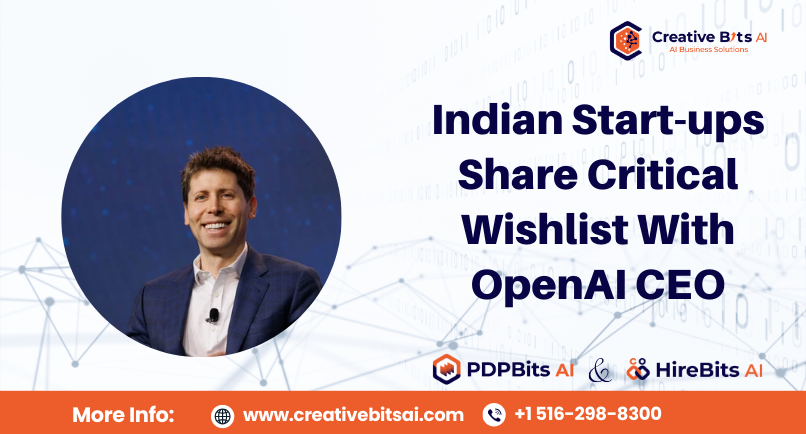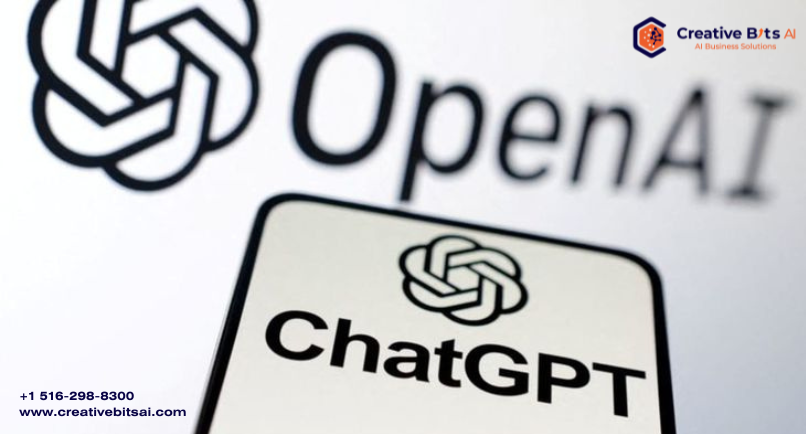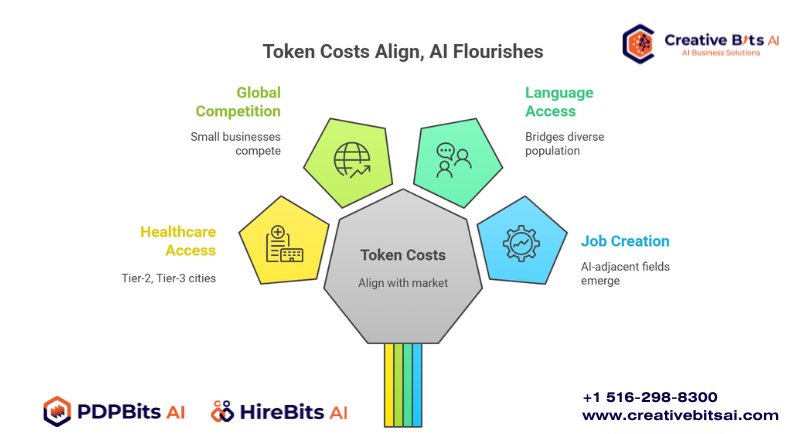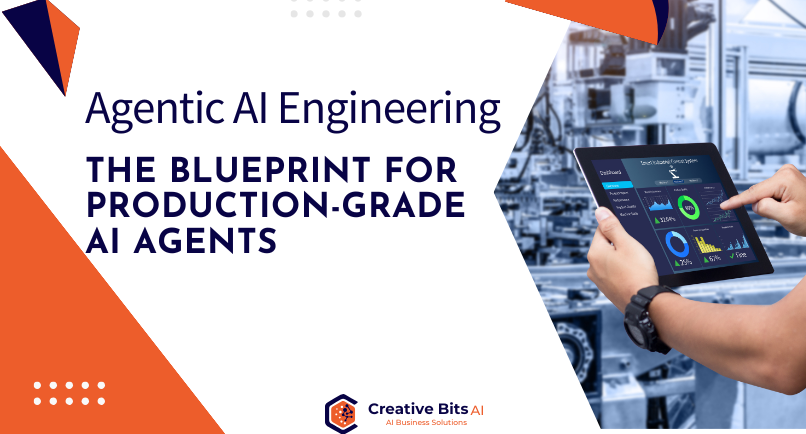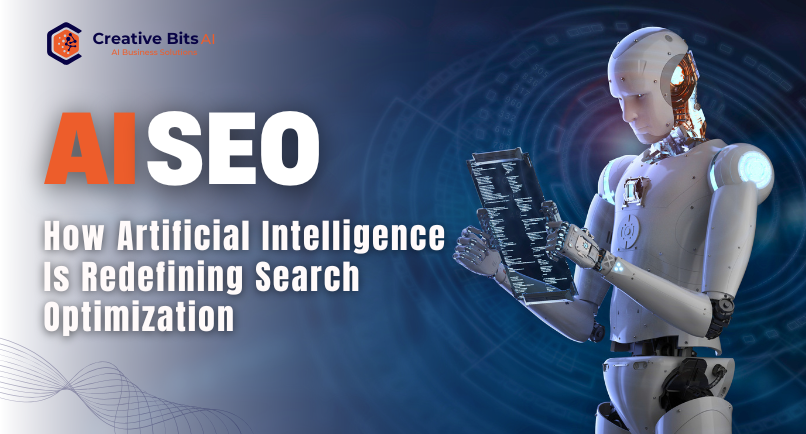As Sam Altman prepares for his visit to India this month, Creative Bits AI joins leading start-ups in articulating crucial expectations from OpenAI’s expansion into the Indian market.
OpenAI’s Strategic Focus on India: What It Means for AI Innovation
India’s position as OpenAI’s largest user base has captured the attention of CEO Sam Altman, who has already visited the country twice in the past year. With 886 million internet users as of 2024, India represents not just scale but a fundamental shift in how AI tools are being monetized and deployed globally. His upcoming visit, coinciding with OpenAI’s decision to establish its first corporate office in New Delhi later in 2025, signals a pivotal moment for Indian AI start-ups.
At Creative Bits AI, we’ve been at the forefront of implementing GPT-4 solutions for enterprise clients, particularly in healthcare outsourcing. Our hands-on experience provides unique insights into both the opportunities and challenges facing Indian start-ups in the AI revolution.
The Token Cost Challenge: Creative Bits AI’s Real-World Perspective
(a) Breaking Down the Economics
Cost optimization remains the most pressing concern for Indian AI start-ups. As Sumit Talwar, our Sales Director at Creative Bits AI, recently shared with Outlook Business, the economics tell a compelling story:
“In one of our healthcare outsourcing projects, processing a single page with GPT-4 costs about 14 cents, compared to 6 cents with human labour. The model also delivers lower accuracy, around 88% versus 94% by human coders.”
This real-world data from Creative Bits AI’s operations highlights a critical gap. However, we’ve identified a clear path forward: “If we can maintain the same quality but cut token costs by 40–60%, customers could see a positive ROI of 20–50%. That would make a big difference,” Talwar emphasizes.
(b) The Pricing Gap Reality
Current OpenAI speech processing costs approximately $0.50 per minute, while the viable price point for the Indian market hovers around $0.05 per minute – a tenfold difference that significantly impacts adoption and scalability for companies like Creative Bits AI and our peers in the ecosystem.
The Comprehensive Wishlist: What Indian Start-ups Need from OpenAI
Through extensive discussions with fellow founders, VCs, and policymakers, we’ve identified key areas where OpenAI can accelerate India’s AI transformation:
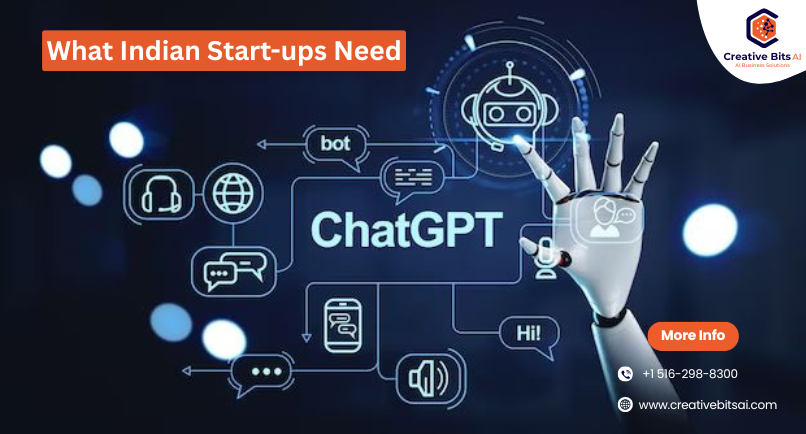
1. Experimental Credits: Following the Cloud Playbook
Indian start-ups, including Creative Bits AI, advocate for OpenAI to replicate the successful models of AWS and Google Cloud by offering free credits. Every prompt and reply on GPT-4.5 carries a cost, making even idea testing expensive for emerging companies. As industry leaders point out, credits function like a prepaid balance, enabling start-ups to experiment before committing significant resources.
Sekhar Maddula, founder of Cartoon Movie, articulates this need: “Support could mean help in building test or development systems. It could mean technical assistance when we hit roadblocks. It could also mean credits to use advanced models like Sora.”
2. Latency Optimization: The Sub-Second Imperative
Real-time applications demand sub-second response times. Current latencies of six to seven seconds severely limit the effectiveness of conversational AI implementations. Sudarshan Kamath of smallest.ai, who participated in OpenAI’s San Francisco entrepreneur meeting, confirms that achieving sub-one-second responses is crucial for viable real-time applications.
3. Data Localization: Building Trust and Compliance
Nikhil Ambekar, Co-founder and CEO of Turinton, emphasizes the importance of local data hosting: “It would improve trust with customers, ensure compliance with data residency and privacy regulations, and enable adoption in sensitive sectors like finance and healthcare.”
This aligns with reports of OpenAI’s discussions with Yotta and Ctrl+S about establishing a large data centre in India with at least 1 GW capacity – a development that Creative Bits AI and other start-ups view as essential for reducing latency and ensuring data sovereignty.
4. Enhanced Indian Language Support: Beyond the Basics
While OpenAI claims support for 11 Indian languages, practical implementation reveals significant gaps. Only Hindi, Bengali, Marathi, Telugu, and Tamil function reasonably well, and even Hindi struggles with regional dialects. This forces start-ups to integrate multiple tools – OpenAI for speech-to-text, Sarvam for text-to-speech, and additional software for tonality – tripling workflow costs.
Nishant Raj of Arden Rede Ltd. frames this as a responsibility: “If they are choosing to operate in a developing country like India, they should ensure AI reaches common, non-tech people as well.”
The Virtuous Cycle: How Local Infrastructure Benefits Everyone
Shweta Rajpal Kohli of the Startup Policy Forum highlights how local infrastructure investment creates a virtuous cycle. Start-ups working on Indian languages and unique use cases would be the primary beneficiaries. As models train on more Indian data, they improve, enabling start-ups like Creative Bits AI to build stronger, more culturally relevant products that can compete globally.
Learning from History: The Cloud Giants’ Playbook
Abhishek Srivastava, General Partner at Kae Capital, draws parallels with successful market entries by AWS, Microsoft, and Google:
- Test the market thoroughly
- Establish local data centres and start-up-focused divisions
- Offer meaningful credits
- Build active communities
- Make strategic investments
“That ecosystem support was huge for start-ups,” Srivastava notes. “Free credits allowed them to start from day zero without capital. Communities gave them access to scaled founders and global insights.”
Creative Bits AI’s Vision: Bridging the AI Accessibility Gap
At Creative Bits AI, we believe OpenAI’s expansion into India represents more than market share – it’s an opportunity to democratize AI access for the world’s most populous nation. Our experience in healthcare outsourcing and enterprise AI implementation positions us uniquely to contribute to this transformation.
The cost-effectiveness challenge we’ve identified isn’t just about margins; it’s about making AI viable for sectors that can benefit most from automation and intelligence augmentation. When token costs align with market realities, we envision AI solutions that can:
- Transform healthcare delivery in tier-2 and tier-3 cities
- Enable small businesses to compete globally
- Bridge language barriers for India’s diverse population
- Create new employment opportunities in AI-adjacent fields
The Path Forward: Collaboration and Innovation
As Sam Altman prepares for his visit to India, the message from Creative Bits AI and the broader startup ecosystem is clear: we’re ready to collaborate, innovate, and scale. The wishlist isn’t just about making requests – it’s about identifying the building blocks for a thriving AI ecosystem that benefits both OpenAI and Indian innovation.
With OpenAI positioning India as potentially its largest market, and companies like Creative Bits AI demonstrating real-world use cases and ROI models, the stage is set for a transformation that could redefine how AI serves emerging markets globally.
About Us
Creative Bits AI is a leading AI solutions provider specializing in enterprise automation, healthcare technology, and intelligent document processing. Our team combines deep technical expertise with practical implementation experience, helping organizations achieve measurable ROI through strategic AI adoption.
For more insights on AI implementation strategies and industry trends, read more on Creative Bits AI’s blogs and connect with our team of experts.
